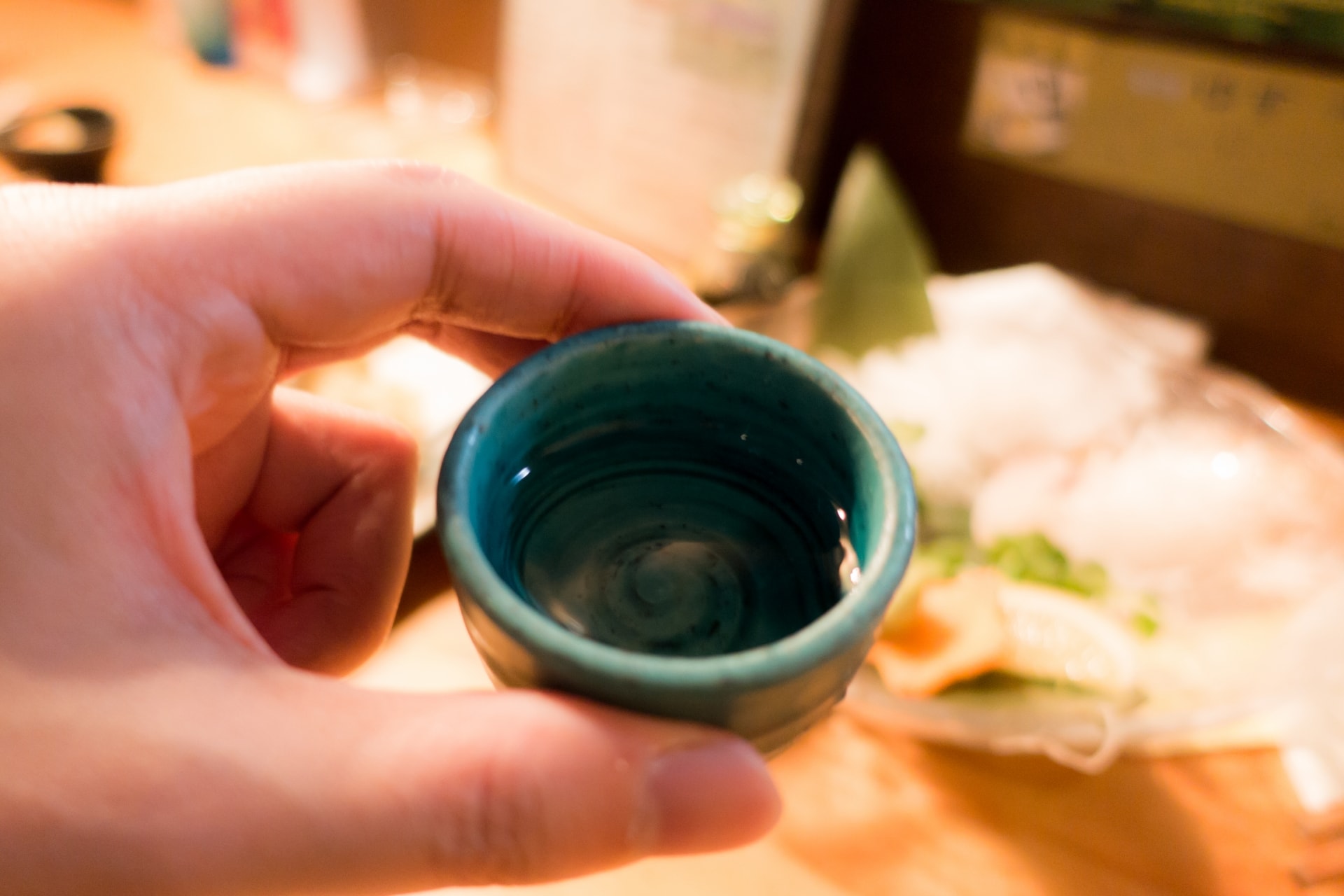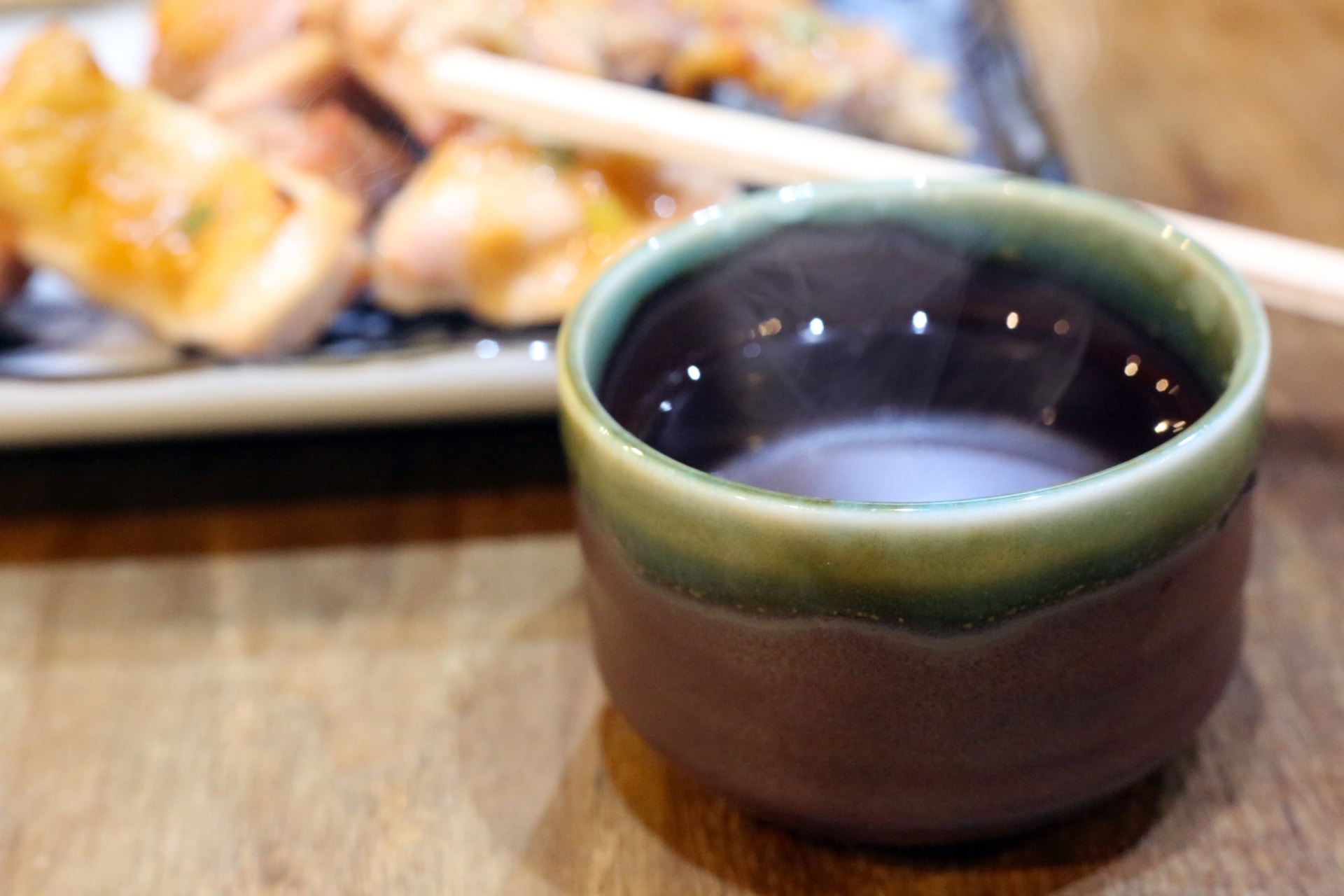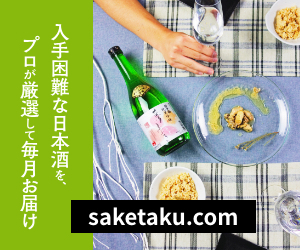- Home
- [Beginning of Sake] - Let's learn more about Sake!
- 11. Pairing Sake with Food: Mastering the Basics of Good Combinations and Essential Rules
11. Pairing Sake with Food: Mastering the Basics of Good Combinations and Essential Rules
- 2023/5/26


In the previous article “10. Seasonal Ingredients & Sake! Let’s Enjoy a higher-grade taste!”I introduced Japanese sake that pairs well with seasonal ingredients.
In this article, I would like to talk about the basic knowledge of “the compatibility of alcohol and food”.
Now, suddenly, how do you all drink alcohol?
Whether you’re having a lively drink at a party, enjoying music or visuals while quietly sipping, drinking quietly by yourself, or having a drink during a meal, there are various ways to drink and enjoy. But still, isn’t the most common way to enjoy a drink while having a meal with various dishes?
When you enjoy alcohol while savoring various dishes, you might hear that this drink goes well with this dish, or this dish doesn’t go well with this drink.
For instance, you might have heard that “red wine goes well with cheese” or “white wine goes well with oysters” or “herring roe and wine don’t go well together” (apologies for all the wine pairings).
So, what exactly does this “compatibility” mean? This article is here to explain the basic knowledge about it.
Since it’s about human senses, naturally, the way people perceive things is different. Moreover, as this is about senses, if you intuitively feel something “goes well,” then it “goes well,” and if you feel something “doesn’t go well,” then it doesn’t. However, like most things in the world, there’s a “theory,” a common denominator that most people agree upon.
And when you start something specific, it’s generally easier to learn if you start by understanding that common denominator “theory”. Moreover, once you grasp that, you might be able to discover your own unique way of enjoying things, which others might not even think of.
So, in this article, as a “theory” to help you find your own way of enjoying alcohol and food, I would like to talk about the basic knowledge of what makes alcohol and food “compatible” or “incompatible”.
Contents
What does it mean for alcohol and food to “go well” or “not go well”?

The terms for the “matching” or “not matching” of alcohol and food, or the compatibility of their pairing, are called “mariage” in French and “pairing” in English.
“Mariage” is spelled as such.
By the way, there is a word in English, “marriage”, and just as you’d expect from a word with almost the same spelling, the primary meaning of “mariage” is also “marriage”, and the combination of food and alcohol (wine) is the secondary meaning. The French certainly have a way with words to use the term “marriage” to describe the pairing of food and alcohol.
On the other hand, “pairing” is spelled as such and means to create a pair or to pair things together.
“Mariage” and “pairing”, derived from their original meanings, have differences such that “mariage” refers to the new relationship created between the food and alcohol, and “pairing” simply refers to the act of putting food and alcohol together. But, without worrying too much about the details, just remember that “mariage” and “pairing” are terms for the compatibility between alcohol and food. That should be enough for now.]
Good Compatibility and Bad Compatibility
So, when it comes to the compatibility of food and drink, a good “marriage” or “pairing” is said to “match,” and a bad one is said to “not match”. But what does it mean for something to have “good compatibility” and “bad compatibility”?
It’s easy to understand if you think about the original meaning of the words “marriage” and “pairing”.
It’s easy to understand if you think about the original meaning of the words “marriage” and “pairing”.
From this, a “good compatibility” or “match” between food and alcohol refers to the following:
- Similar scents, textures, and flavors (harmony)
- A better or new flavor is born when combined (creation)
- Compensating for the deficiencies in the food (compensation)
Conversely, what do you imagine from the term “a bad marriage”? You may imagine a couple with conflicting personalities, thoughts, and values who create a dark and unhappy household, or ruin each other’s good points.
From this, a “bad compatibility” or “no match” between food and alcohol refers to the following:
- No changes or intersections in scent, texture, and flavor (parallel)
- When combined, it becomes unpleasant, or an unpleasant scent, texture, or flavor is produced (deterioration)
- Cancelling out each other’s good points (conflict)
In simple terms, it could be said that:
Food and alcohol match (good compatibility): things that have a relationship of harmony, creation, and compensation
Food and alcohol do not match (bad compatibility): things that have a relationship of neutrality, deterioration, or conflict
Let’s take a closer look at each of these in the following sections.
Good Examples of Food and Alcohol Compatibility

There are three types of relationships involved: harmony, creation, and compensation.
Let’s look at examples of each.
[Harmony]
Harmony represents a state where “like elements coexist without negating each other”. When the scent, texture, and taste are in harmony, it is often described as “no discomfort”, “unified”, and “well-balanced”. In the reference book for this article, “Shintei Nihonshu no Motoi”, it is called “synchronization”.
Here are some simple examples of harmony:
Harmony of scent
“Mii no Kotobuki Porcini, which has a scent like Porcini mushrooms” × “A salad loaded with mushrooms”
[Harmony of texture]
“Nihonto(Sword) Junmai Ginjo Super Dry with a sharp taste” × “Crunchy vegetables”
[Harmony of taste]
“Junshu, with a clear umami taste” × “Oden with a strong dashi flavor”
The compatibility is better when multiple elements such as scent, texture, and flavor overlap. However, when both are simply sweet, rich, or strongly acidic, it often does not “harmonize” even if they “synchronize”, as it may become too heavy or the stimulus may be too strong.
In the East, there is a saying, “Too much is as bad as too little”, and in the West, “Virtue is nothing but mesotes (moderation)”, emphasizing that balance is important, not extremism, in achieving “harmony”.
In many cases, when it is said that the compatibility of food and alcohol is good, it is referring to this state of “harmony”.
Creation
By combining food and drink that originally do not synchronize, do not have the same direction, and have different characteristics, a new flavor may be born.
For example, “foie gras” and “extremely sweet wine” are famous combinations that create a new flavor by combining the rich flavor of fat and the strong sweetness (apparently).
Since the administrator (referring to the author) has not eaten such luxurious things, a more mundane example would be, when you combine “Tokubetsu Junmai Sake Morizumi”, a sake that allows you to fully appreciate the umami of rice and a scent reminiscent of sour fruits, with “Kai Wasabi”, characterized by the sharp spiciness of wasabi that hits your nose, the umami of the sake and shellfish, and the umami of wasabi come together to sublime into a refined and sophisticated umami.
An even more familiar example might be a bit off-target, but something like “pudding with soy sauce tastes like sea urchin” or “cucumber with honey tastes like melon”.
In this way,“By combining things with different taste tendencies, an unexpected new taste is born”,, such combinations of food and drink can also be said to have good compatibility.
Complement
I have defined “complement” as the adjustment of deficiencies or excesses felt when eating food to improve its state.
Specific effects include “washing away the greasiness of the food” and “suppressing the fishiness of the food”.
The effect of the stimulation from the alcohol in drinks, such as “washing” or “resetting” the greasiness of food, is called “wash” or “reset”.
When you wash away the greasiness remaining on your tongue with a drink, your taste buds are refreshed and the food progresses, so it can be said that this is a good combination.
Not all drinks are suitable, and there seem to be cases where they do not go well depending on the combination of dishes.
For example, it is said that “lamb dishes and red wine” or “caviar and vodka” are difficult to pair. Basically, combinations that make the most of the individuality of the drink and food are appropriate.
Especially for sake, it has a characteristic of suppressing the fishy smell of seafood and seaweed dishes and enhancing the goodness of the ingredients.
A commonly told story is that pairing raw oysters with sake suppresses the fishiness of the oysters and allows you to enjoy their rich flavor alone.
From the my experience, even with dishes like shiokara or sea squirt, which can become fishy if not handled properly, pairing them with sake suppressed the fishiness and allowed me to enjoy the taste alone.
I do not believe that all sake suppresses the fishiness of seafood and brings out the umami of the ingredients, but in my experience so far, there has not been a sake that did not have this function to suppress fishiness.
In the case of wine, there seem to be relatively many that do not have this function to suppress the fishiness of seafood, and considering these factors, it seems that choosing sake when having raw seafood is less likely to disappoint.
Examples of poor compatibility between alcohol and food

In this case, there are three types of relationships: Neutral, Deterioration, and Antagonism.
Let’s look at examples of each.
Neutral
Neutral refers to combinations of alcohol and food that have no influence on each other.
In the reference book for this article, “Shintei Nihonshu no Moto”, it is called “Parallel”.
Since they don’t affect each other, it can’t be definitively said that the compatibility is poor. However, it can’t be said that the compatibility is good, so it seems to be classified as “poor compatibility”.
It’s like saying, “There are two types of people in the world, those who are △△ and those who are not”.
In my experience as an administrator, I think that most combinations of alcohol and food are in this “Parallel” relationship.
Therefore, I personally call this “Neutral” and treat it as something that is neither good nor bad in terms of compatibility.
In the blog articles on this site that I write, I express it in such a way.
Degradation
Degradation refers to combinations that produce unpleasant smells, textures, or flavors that are not felt when consuming the drink or food alone.
In system development, when modifications are made to fix or improve system defects, it sometimes happens that the modifications have a negative impact on other parts, leading to more defects or reduced usability than before.
This situation is referred to as “Degrade” (abbreviated as “Degre”). I felt that the image overlapped with this concept, so I used the translated term for degrade, “Degradation”.
By the way, in the reference book for this article, “Shintei Nihonshu no Moto”, this is referred to as “Repulsion”.
For example, “white wine” and “Kazunoko” (herring roe).
I’ve never tried this combination, but according to a summary article on NAVER, this is introduced as the worst combination, to the point that it feels so fishy that you might spit it out.
This phenomenon of degradation seems to be often seen mainly with wine.
“Degradation” combinations can unquestionably be referred to as “bad compatibility”.
Mutual Suppression
Mutual Suppression refers to combinations that eliminate each other’s characteristics.
The reference for this article, “Shintei Nihonshu no Moto,” and in general, call this a “poor balance.”
I whimsically named this “Mutual Suppression”.
The reason for naming it so is because I assigned two-character Chinese compound words to other combinations, and I thought it would be “poor balance” to make this one alone a “subject + predicate” form.
That said, this “Mutual Suppression” or “poor balance” refers to situations such as when you pair a rich drink like Shaoxing wine, whiskey, or brandy with delicate and bland white fish sashimi, the strength of the drink’s flavor wipes out the delicate taste of the dish.
Also, if you pair a “delicate-flavored white wine” with “beef kalbi,” which is characterized by its rich fat, the robustness of the kalbi’s fat erases the delicate flavor of the drink, making it impossible to appreciate the taste of the drink.
Such combinations are referred to as having a poor balance.
Based on my experience, this combination is relatively common, and I often get the impression that the taste of the food dominates over the drink.
In most cases, the dish is the main and the drink is the secondary, so if it does not spoil the taste of the dish, I feel this combination might not be considered so bad.
Fundamental Knowledge You Should Know About Pairing Sake and Food

So far, we have explained what it means to have “good” or “bad” compatibility when pairing “alcohol” in general and food.
As this is a site about “sake”, I would like to introduce some characteristics specific to the combination of “sake” and food. In other words, this is fundamental knowledge about pairing sake and food.
By knowing these, I believe you can enjoy them in a better matched state, so please refer to it.
Sake Suppresses the Fishy Smell of Seafood
As mentioned in the “Complementary” section, sake has the effect of suppressing the fishy smell of seafood and bringing out the flavor of the ingredients.
I also wrote about how white wine and kazunoko(Herring roe) is the worst combination.
This is because when wine and seafood are paired, the iron contained in the wine, or more precisely, in the grapes used as raw material, reacts with the blood and fat of the seafood, resulting in a unique fishy smell (this is known as the Fenton reaction).
On the other hand, while the rice, which is the raw material for sake, contains iron, the amount of iron is reduced in the manufacturing process, such as by using water with a low iron content to make the sake (if you look at the nutritional information, it will be 0mg), it has the effect of suppressing the fishiness of seafood and bringing out the umami of the ingredients.
This is why the pairing of sake and seafood is considered to be excellent.
Sake Pairs Well with Flavorful Dishes
Generally, dishes using fermented condiments such as soy sauce, fish sauce, miso, or fermented foods like aged sushi, pickles, and natural cheese, are flavorful and are said to not pair well with alcohol.
However, sake is known to be a good match with strong-flavored dishes among alcoholic beverages.
This is because sake is characterized by its umami, which harmonizes with the umami components of the dishes, enhancing their deliciousness.
In particular, among the types of sake flavors, “Junshu” pairs well with strong-flavored dishes.
Sake Tends to Pair Well with Vinegary Dishes
Generally, dishes made with vinegar are said to be hard to pair with alcohol. The strong acidity of vinegar can overpower the characteristics of the alcohol, and the acidity or bitterness of both the vinegar and alcohol can be accentuated.
In this regard, sake has comparatively less acidity and bitterness than other alcohols, making it less likely to clash and more likely to pair well.
In particular, dishes made with rice vinegar, which shares the same raw material, seem to pair well with sake.
Sake Enhances the Natural Flavor of Ingredients
Dishes such as white fish, vegetables, and tofu cuisine have delicate flavors, and depending on the type of alcohol, the individuality of the dish might be overwhelmed.
Sake often possesses a light, smooth taste akin to water, making it a great match for these delicately flavored dishes.
When pairing delicate dishes with sake, a ‘refreshing sake’ type characterized by its brisk and smooth taste is recommended.
Sake Tends to Harmonize with Soup
Generally, alcohol and soup are seldom paired together because they are both liquid.
However, in Japanese cuisine, when enjoying a bowl of soup and sake simultaneously, the soup is primarily a showcase of umami flavor from the broth, which can harmonize easily with the umami characteristic of sake.
This harmony of umami is a combination that many Japanese people enjoy and it has become a fundamental approach when pairing sake with Japanese cuisine.
Sake Pairs Well with Spices
Among the different types of sake, “aged sake,” which has a spicy aroma, seems to pair well with spices.
The strong flavor of spices and the unique aroma and taste of aged sake tend to harmonize, which is why they are considered to have good compatibility.
Sake Harmonizes with Dairy Flavors
Rich dairy products (butter, cream, cheese) pair well with “rich sake” that also has a strong taste.
In particular, sake made with natural lactic acid bacteria, known as “kimoto-style” sake, has a creamy flavor, which may be because it shares a common root with the word “milk” in Japanese, and harmonizes better with dairy products.
Fragrant Sake Pairs Well with Dishes Using Fruits and Herbs
Dishes using fruits and herbs are characterized by their distinctive fragrances.
These kinds of dishes tend to pair well with fragrant sake, or “Kun-shu,” which also has a strong aroma.
When enjoying Western or ethnic dishes made with fruits and herbs, it might be a good idea to pair them with ginjo or daiginjo sakes, which often fall into the “Kun-shu” category.
Conclusion
This article has explained the compatibility between sake and various types of food.
We’ve primarily focused on what it means for a pairing to be “good” or “bad”, as essential knowledge to have at hand.
We’ve also introduced the unique characteristics of sake when it comes to pairing with food.
Essentially, a pairing is considered “good” when the characteristics and flavors of the food and sake align, and “bad” when they differ.
Therefore, when pairing food and sake, it’s ideal to choose combinations where the flavors and characteristics align, such as a dish rich in umami with a sake that also has a lot of umami.
Of course, this is a basic theory, and there can be good pairings beyond those where the flavors align.
After mastering the basics, it could be interesting to explore some unexpected combinations.
When you enjoy your food and drink sake, being mindful of these points will allow you to appreciate both more deeply. We encourage you to try this approach.
【参考文献】
Japan Sake Service Institute & Sake Service Institute (SSI).『The Basics of Sake (Revised Edition)』 Non-Profit Organization FBO, 2018.
Next time, we will present episode 12: “Sake and Japanese cuisine! What are the best pairings? Introducing them by type of flavor!”
もしお気に入りいただけましたら、投げ銭などしていただけると、大変、嬉しいです♪

Restaurant Information
| Shop Name | |
|---|---|
| Prefectures | - |
| Tel | |
| Address | |
| Nearest Station | |
| Homepage | - |
| Business Hours | - |
| Holiday | |
| Introduction | |
| Sake List |
|

